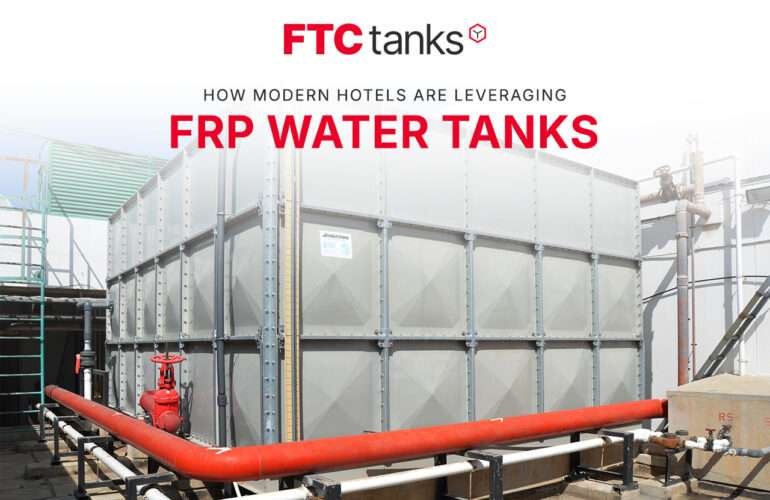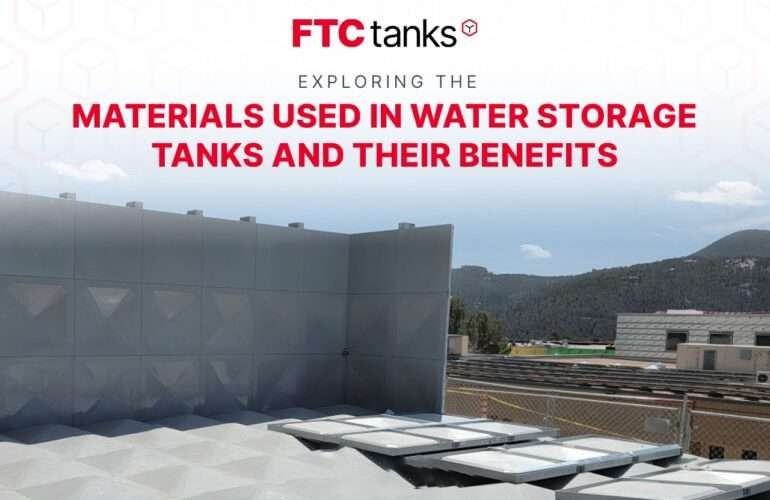Running a commercial building costs more than most people think. You’ve got energy bills, maintenance, safety checks, and of course, water. Water is one of those hidden costs that quietly adds up month after month. And most businesses don’t even realize how much they’re losing until they look at the numbers.
That’s where a water cistern system can make a real difference. With the right setup using FRP tanks, companies are saving thousands every year (sometimes more) just by rethinking how they store and reuse water.
How Water Use Becomes a Hidden Expense
It’s easy to overlook water. You turn the tap, it flows, you pay the bill. But in a commercial setup, like hotels, factories, hospitals, or schools, it’s not that simple. These places use water for cleaning, cooling, flushing, landscaping, and even fire safety.
Now, here’s the catch: not all of that water needs to come from the main supply. Yet, most systems are built that way. Every time the city hikes prices, your costs go up too. Over time, it starts cutting into your operating budget.
A smart solution is to store and reuse water where possible. It’s not new, but with FRP water tank systems, it’s finally practical for modern buildings.
Why FRP Tanks Are a Better Fit
A good FRP tank is one of those things that just works quietly in the background. It doesn’t rust like steel, doesn’t crack like concrete, and doesn’t need much looking after. The material, fiberglass-reinforced plastic, can handle heat, pressure, and chemicals with ease.
The big plus is flexibility. You can install FRP water tanks in the basement, on rooftops, or even inside mechanical rooms. They’re lightweight, which makes transport and installation cheaper too.
And when you choose NSF-certified water tanks, you know they’re safe for storing potable water. No second-guessing. These certifications matter, especially when compliance is part of your project spec.
Turning Rain and Greywater into Savings
Here’s where things get interesting. Rainwater harvesting isn’t just for green buildings anymore. With a water cistern, you can collect rainwater and reuse it for things like flushing toilets, washing, cooling, or irrigation.
The same goes for greywater, the lightly used water from sinks and showers. With some basic treatment, it’s good enough for reuse. Pair that with reliable FRP tanks, and you’ve got yourself a closed-loop water system that keeps costs down all year.
According to the EPA WaterSense Program and LEED data, some buildings report savings up to 30%. That’s not a small number. For large commercial properties, that’s real money staying in the budget.
The Fire Protection Angle
Every commercial site needs a fire water tank that meets code. For most, that means following NFPA Water Tank requirements. It’s not optional — it’s safety.
Now, steel tanks might do the job for a while, but corrosion is always a risk. Once it starts, maintenance becomes a headache. With FRP tanks, you don’t have that problem. They last decades with almost no upkeep, and they hold water safely without contamination.
In fire protection, reliability matters more than anything. FRP gives you that.
Low Maintenance, Long Lifespan
This is where FRP really shines. Once installed, these tanks don’t need much attention. There’s no painting, no corrosion treatment, no expensive downtime for repairs. The smooth interior makes cleaning easier, too.
Even better, FRP doesn’t absorb heat easily, so the water stays stable in different weather conditions. That means your system runs efficiently, year-round, with almost no interruption.
It’s the kind of setup that facility managers appreciate. All you need to do is install it once, check it once in a while, and move on.
Why More Engineers Are Specifying FRP Tanks
Walk into any new commercial project, and you’ll likely find FRP tanks in the plans. They’re now part of standard specification tools like Speclink, often listed under plumbing, hydronic systems, or site utilities.
Why? Because they check every box: durability, compliance, sustainability, and cost control. When you’re designing for the long term, a water storage tank that lasts 40+ years without corrosion just makes sense.
Developers are realizing that FRP isn’t just another tank material. It’s part of a smarter approach to managing resources in modern construction.
Saving Costs the Smarter Way
In the end, putting in a Water Cistern system with FRP water tanks just makes sense. You cut your dependency on city supply, trim down your bills, and always have extra water on hand when demand jumps or restrictions hit. The setup isn’t cheap upfront, but it pays off fast. Lower water use, fewer service calls, and tanks that hold up for years — it all adds up.
These days, businesses need reliability, not patchwork solutions. That’s where FTC Tanks comes in. Our NSF certified water tanks, fire water tanks, and tough water storage tanks help keep costs low and operations steady.Simple, solid, and built to last — that’s FTC Tanks.





